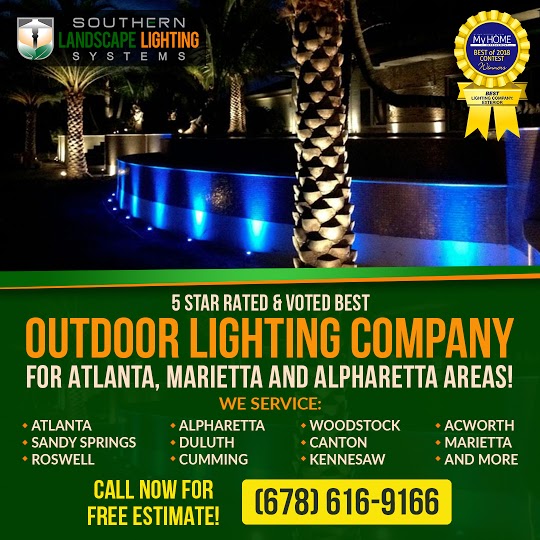Landscape lighting gives you so many options for entertaining or relaxing outdoors after dark.
But it also adds huge curb appeal to your home.
If you’ve been trying to light up your nighttime with solar lights and they’re just not cutting it, it’s time to truly illuminate your yard. You’ll see what a major difference it makes.
5 Landscape Lighting Ideas to Illuminate Your Nights
Shedding some light onto the darkness isn’t as big an order as it sounds. Just follow these five steps to bring some light into your nights.
(1) Cover the Basics
When you first start thinking about your landscape lighting objectives, try to resist the temptation to light every square inch of your yard.
Below are the elements that are considered necessary to highlight in your lighting design:
- Patios
- Steps
- Entryways
- Walkways/Paths
- Driveways
- Trees
- Unique Architectural Elements
- Water Features
Once you’ve got an idea of what needs to be lit, you’ll next want to know how.
(2) Know the Different Lighting Techniques
It’s more than just sticking a few lights into the ground or mounting a couple onto a wall and calling it a day. You need to be selective.
There are many techniques:
Up-lighting
Lighting is placed on the ground and angled upwards towards trees, walls and other features of your garden.
Down-lighting
Opposite of up-lighting, the lights are positioned above what is to be highlighted, and then angled downward.
Highlighting
This is the technique to use when you want to accent a specific feature of your garden. You just angle the light at the object to create the effect.
Path-lighting
This is lighting specifically designed to illuminate a path so you, your family and guests can safely reach your destination.
Silhouetting
With this technique, a light is placed behind an object and faced towards an adjacent wall to give it a dark and ominous feel.
Shadowing
Less ominous and eerier, shadowing is when a light is placed in front of an object so that a shadow is cast on a wall.
Moonlighting
Bright lights are positioned in high trees to create a downward shadow that gives your yard a natural beauty – even at night.
Once you have an idea of those basics and how you want to light them, you need to consider what kind of light
(3) LED Or Halogen?
For a long time, halogen was your only choice. But LED is taking the lead. Why?
LED landscape lighting gives your landscape lighting a far longer life. You won’t need to worry about climbing trees or digging through snow to replace bulbs every few months.
LEDs are also designed to handle shock and vibrations, and all kinds of horrible weather that would put halogens out of service.
Plus, they can be can be dimmed or brightened to create complex lighting effects.
Speaking of brightening those lights, ensure they’re not too bright.
(4) Avoid Outdoor Light Pollution
Light pollution happens when the use of light is improperly placed or simply too bright. In both cases, it can ruin the effect of your whole lighting project.
Just be careful to not shine the light directly into someone’s eyes or onto your neighbor’s home or windows. And remember that too much lighting can actually create a glare that will wash out the night sky.
(5) Position Your Landscape Lighting at Night
And finally, once your plan is in place, be sure to position those lights at night.
It’s the best way to understand how the features of your garden will cast shadows. And you’ll also lessen the risk of misplacing a light or shining one into your window or door.
So there you have it.
Are you ready to light up your night and start having fun? Give us a call. We’re always happy to help.

